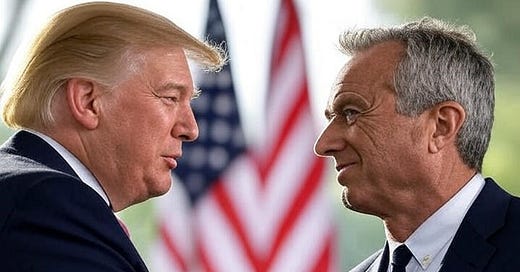🚨 BREAKING: Trump Admin To Officially Set Price Targets for Zepbound and Wegovy
Will big pharma go along with it, or simply wait out the Trump administration?
The U.S. Department of Health and Human Services announced forthcoming list of new price targets for branded drugs (with no generics or bio-similars), following President Trump’s Most Favored Nation executive order. In simple terms, the aim is to cap American drug prices at the lowest price paid in any major developed country.
But even as HHS Secretary Robert F. Kennedy Jr. and CMS Administrator Dr. Mehmet Oz drew a sharp line in the sand, skepticism hangs over the rollout. For every bold promise, there are just as many doubts among industry insiders and policy watchers.
The new rules target all brand drugs without generic or bio-similar competition. HHS is also moving to expand direct to consumer sales, letting American patients buy medications straight from manufacturers at the new global price. They are threatening to create new rules and apply penalties for drug makers who do not play along. On paper, it sounds sweeping.
Pharma’s Shrug
So far, the pharmaceutical industry is barely blinking. At the Bank of America Global Healthcare Conference, Eli Lilly executives described the executive order as “the stick,” but the tone was hardly one of panic. They called global benchmarking a distraction from the real cost drivers, like rebate deals, middlemen, and the gap between list price and what actually changes hands.
Lilly and other companies are quick to highlight their own direct to consumer programs, such as LillyDirect. While these efforts look aligned with the White House’s messaging, they also let pharma keep control of pricing and access, even as the policy landscape shifts.
The Real Enforcement Test
For the administration, the biggest hurdle is not setting the targets. It is making them stick. HHS says it is ready to write new rules and use trade tools if manufacturers refuse to comply. But this industry is famous for tying up reforms in lawsuits and for slow walking compliance.
There is still no clear plan for how the government will track prices across different payers or force drug makers to keep products on U.S. shelves if margins get squeezed. The whole approach depends on industry buy in that may not be there.
What This Means for Patients
If this all works as planned, Americans could finally see the same prices for medications that patients get in Germany, France, or South Korea. Direct to consumer options could open a door for people paying cash, fighting insurance denials, or searching for affordable GLP-1s.
But the entire idea is riding on a very big if. Washington has announced a long list of big ideas on drug pricing that have fizzled on contact with the real market. Pharma is already signaling it may be more interested in outlasting the order than following it.
Bottom Line
The administration has set bold targets and talked a tough game. The industry is watching, but so far seems content to wait and see how far the White House is willing or able to go. Whether patients will see real savings or just another round of headlines is now the biggest question of all.
If you want more updates and analysis as this unfolds, subscribe to On The Pen. If you value this reporting, consider a paid subscription or a Venmo tip to @OnThePen





Thanks Dave,
I’d love to see the prices they have in mind. Lilly direct is $350/mo for 2.5mg and $500 for 5-10mg which is still ridiculously high and much more than the around $200 cost to some other nations. Plus they don’t even offer the 12.5 and 15, so many of us would have to lower our dose or pay even more than 500/month to keep our current treatment. I hope their set price is less than 500/month.
Get rid of the coupons/rebates and get rid of the middlemen!!!! so the money is not going everywhere else.
Most of America needs GLP-1 drugs so the demand is so great that the prices can fall. Everyone is afraid tha t food consumption will drop which it should since we are gluttons. Higher food prices fixes many issues. 80Bites.com